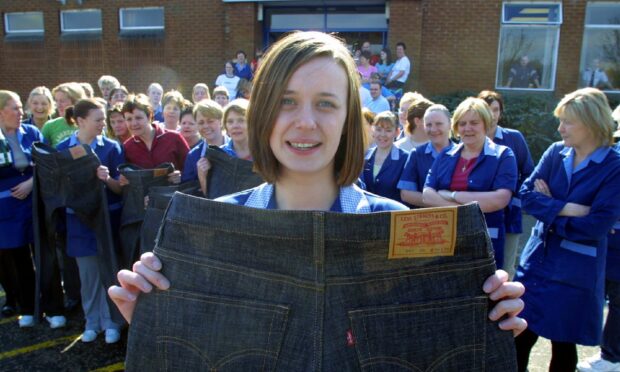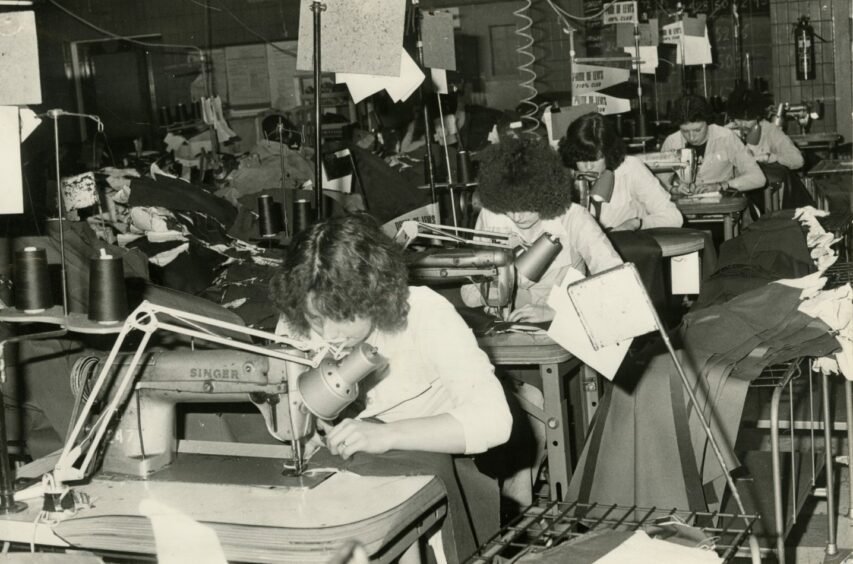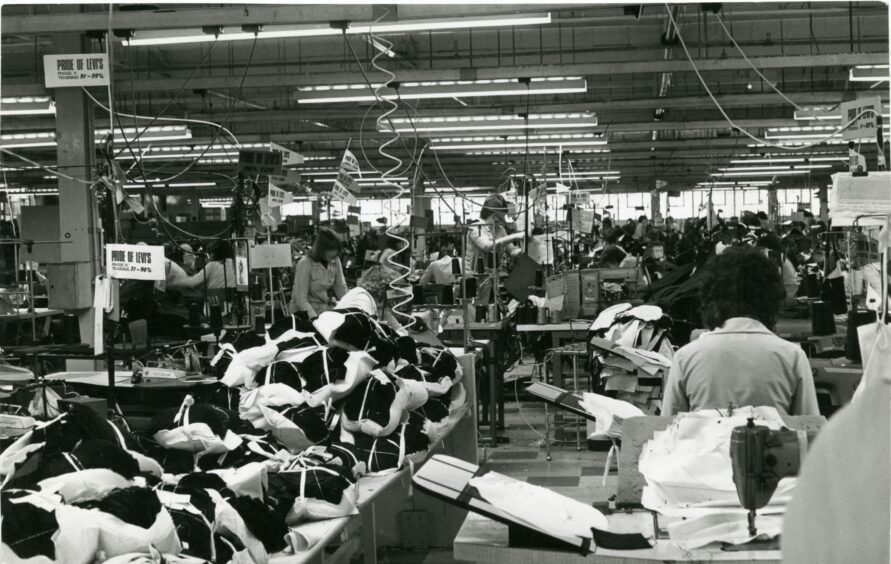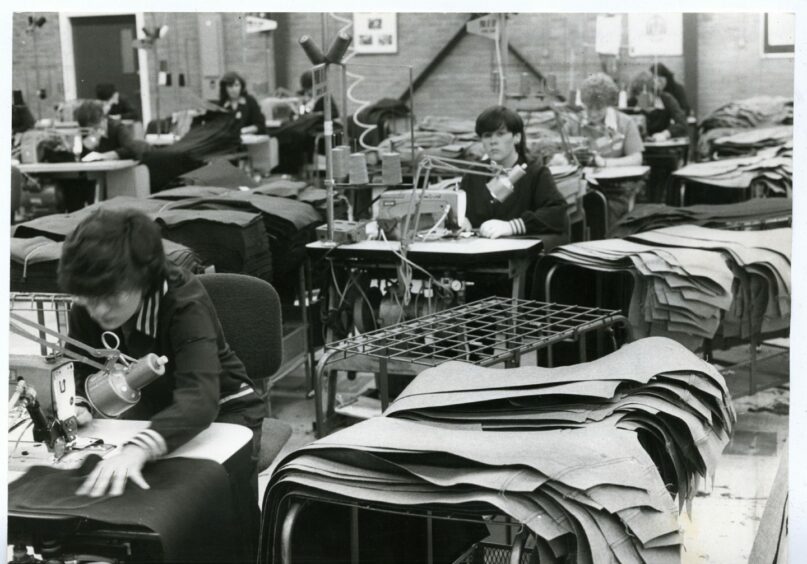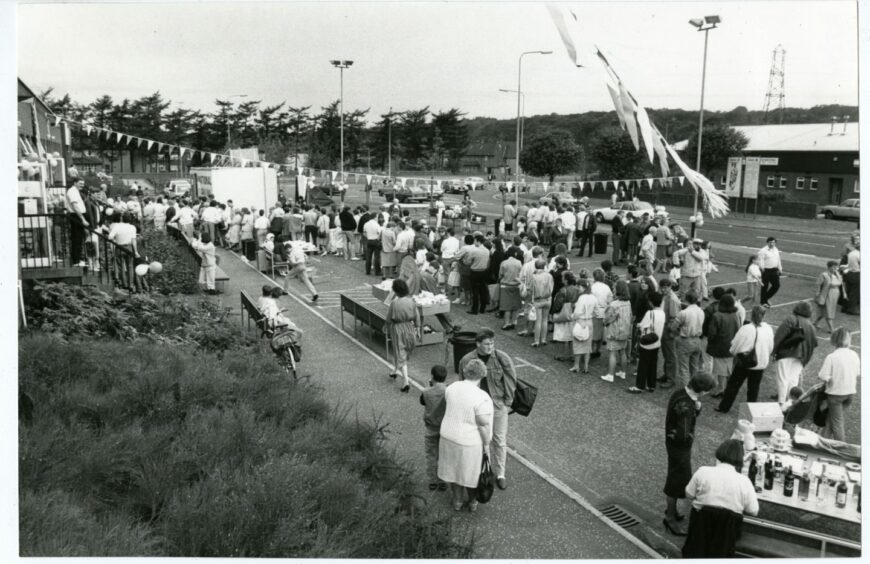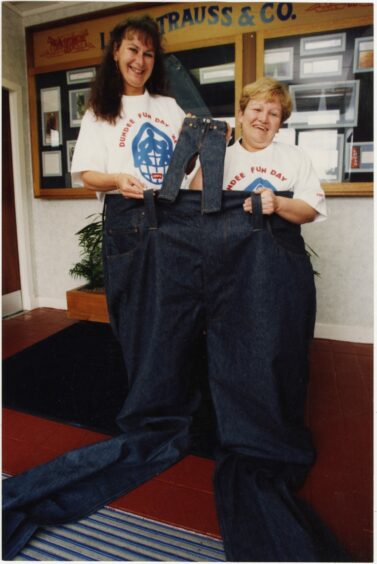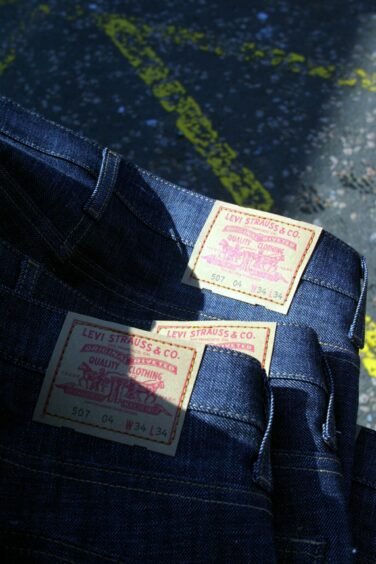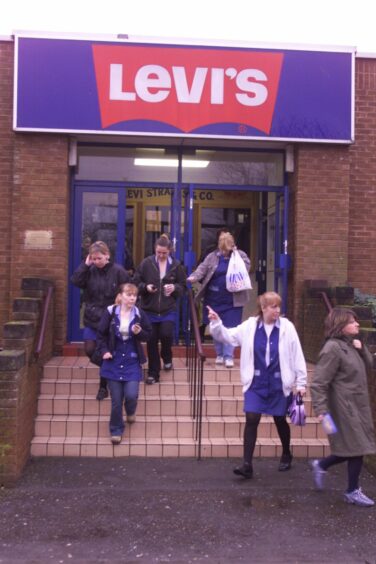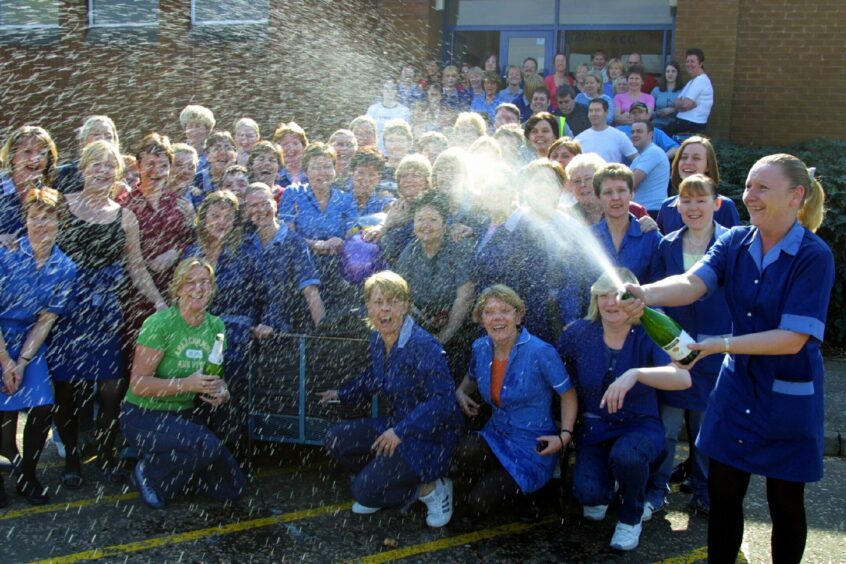Levi Strauss began its 30-year association with Dundee in 1972 when it opened its first factory in Kilspindie Road on the Dunsinane Industrial Estate.
The company itself traces its history back to 1873 when Levi Strauss created the jeans brand which is still owned by descendants of his family.
Initially employing just over 100 people in Dundee, the San Francisco-based firm expanded its operations throughout the 1970s and 1980s, including opening a temporary cutting plant at Baldovie Industrial Estate, before a move in 1982 to its plant overlooking Dunsinane Avenue and Coupar Angus Road, where all production operations were contained under one roof.
At its height in the mid-1990s, nearly 600 people worked there, and a million pairs of jeans were leaving the plant every week.
It’s well-known that nimble fingers were essential when dealing with yarn breakages in the mills and that particular skill was also prized when hand-assembling precision watches at Timex or sewing the iconic Levi jeans.
That’s why the factory floor at Levi’s was primarily female.
They were touted by the firm as being among the best employees in the world as the company expanded its operations throughout Scotland, and increased its workforce by over 2,000 with new jobs at Dundee, Whitburn and Bellshill.
It didn’t stop there, apparently, as it was also said that when they clocked off, the Levi’s girls also knew how to party – nobody partied as hard as a Levi’s girl, apparently.
The remarkable achievements of the Dundee factory’s community involvement team were widely praised for its charitable work, which saw employees raising hundreds of thousands of pounds for countless good causes.
The CI team in Dundee was formed in 1978 and provided support for various groups from local Scout troops to refurbishing old people’s homes.
And the workforce celebrated when Levi’s announced in 1996 that it would be rewarding its employees with the granting of an extra year’s salary bonus at the turn of the millennium, provided worldwide sales and production targets were met.
At the time, hundreds of workers from the Dundee factory were bussed to the Odeon Cinema at the Stack Leisure Park to see a film telling them how they were each in line for a bumper bonus payment.
Once there, they were given details of how they could receive an average of £14,000 each in 2001, if the financial targets were achieved worldwide.
Staff were over the moon and planning what they would do with the money.
However, the warning signs began to show almost immediately as the bottom fell out of the worldwide denim market, with management announcing several downsizing programmes involving cutbacks in production and personnel at the factory in the past five years.
In 1999 the then Enterprise Minister, Henry McLeish, visited Levi Strauss bosses at San Francisco to clarify the future of the company’s plants in Scotland.
A round of cutbacks had seen the Dundee workforce reduced to under 500.
Later that year, Levi’s pulled the plug on its Whitburn plant and cut the workforce at Bellshill, leading to gloomy speculation about the Dundee plant’s long-term future.
Workers were dismayed to learn they were to miss out on the millennium bonus after the firm failed to reach its targets of $7.6 billion.
The company’s American bosses blamed the problems with UK production partly on the influx of cheap Levi 501’s jeans into supermarkets, most notably Tesco, which imported them from Mexico and sold them at up to £20 less than the recommended retail price.
The factory shut for good in 2002 with the loss of 462 jobs which was the result of a need to lower production costs in a “challenging economic climate”.
The GMB union recommended acceptance of the negotiated redundancy package after an independent report by Professor Robert van der Meer, of Strathclyde University’s Business School, confirmed Levi’s own findings that there was no alternative to the closures of the Dundee and Bellshill factories.
Frank Ross, director of sourcing for Levi Strauss Europe, Africa and the Middle East said: “We greatly regret the necessity of closing these plants, but hope this package will help compensate our employees for their loyalty and the hardship this decision will cause.”
There was no bitterness, no recriminations and, unlike some industries, the loss of Levi’s left only fond memories.
Staff marked their last day at the factory with champagne.
